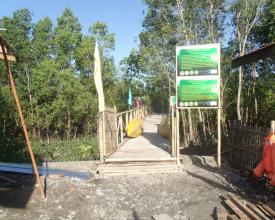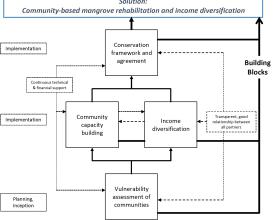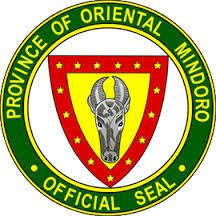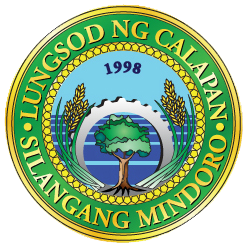Réhabilitation de la mangrove et diversification des revenus
Contexte
Défis à relever
Emplacement
Traiter
Résumé du processus
Blocs de construction
Évaluation de la vulnérabilité
Les sites appropriés sont identifiés et classés par ordre de priorité en fonction de la capacité de la réhabilitation de la mangrove à réduire la vulnérabilité face au changement climatique. Dans le cas de Silonay, la réhabilitation de la mangrove a été identifiée comme une solution à la vulnérabilité aux ondes de tempête.
Facteurs favorables
- Existence de zones de mangrove restantes ;
- Savoir-faire technique et financement des ONG partenaires ;
- Sensibilisation de la communauté et des autorités locales aux avantages des services écosystémiques des mangroves et des autres ressources marines.
Leçon apprise
Les personnes qui bénéficient des habitats, des espèces et des sites (et des services qu'ils fournissent) doivent être impliquées dans leur gestion et dans la prise de décision concernant le projet. Les évaluations de la vulnérabilité doivent être réalisées au niveau municipal et au niveau du village. Les résultats des évaluations de la vulnérabilité doivent être communiqués aux principaux décideurs politiques locaux et nationaux, aux chefs d'entreprise locaux et aux dirigeants communautaires afin qu'ils puissent prendre des mesures pour remédier aux principales vulnérabilités.
Formations et mentorat communautaires
Les besoins en compétences et en connaissances de la communauté cible sont identifiés pour la réhabilitation et la gestion de la mangrove, ainsi que pour le développement de moyens de subsistance alternatifs. Des formations et des activités de tutorat sont organisées et développées pour renforcer les capacités des communautés dans les aspects requis du projet. Il s'agit notamment du développement de l'organisation et de l'entreprise, de la gestion de la mangrove et de la gestion financière. En outre, les activités de renforcement des capacités sont l'occasion de communiquer plus clairement sur le projet et de sensibiliser la communauté cible.
Facteurs favorables
- Une organisation communautaire forte qui souhaite s'engager dans le projet ;
- Un soutien technique pour le renforcement des capacités de la part de diverses organisations et institutions.
- Le rôle des femmes dans la communauté.
Leçon apprise
Il est important que la communauté adhère au projet et se l'approprie. La compréhension du concept du projet et l'acceptation de ses mécanismes sont la clé du succès. Pour assurer une planification et une mise en œuvre harmonieuses du projet, il convient d'établir dès le départ un équilibre clair entre les attentes des communautés, du gouvernement local et des prestataires de services, tels que Conservation International, en ce qui concerne les détails et les mécanismes. Les femmes sont des agents clés du changement dans la gestion des ressources naturelles de la communauté, l'innovation, la pêche et les soins. Le rôle clé des femmes dans l'adaptation au changement climatique et aux écosystèmes doit donc être soigneusement pris en compte. Dans le cas de Solonay, la plupart des participants actifs sont des femmes.
Diversification des revenus
Tout d'abord, les communautés identifient les moyens de subsistance possibles. La communauté discute et se met d'accord sur les priorités qui sont durables et qui correspondent donc le mieux aux capacités de gestion de la communauté. Une formation est dispensée pour renforcer les capacités des moyens de subsistance identifiés afin d'en assurer la durabilité, et des ressources sont fournies pour mettre en œuvre d'autres moyens de subsistance. Un mentorat continu permet de garantir la réussite du projet.
Facteurs favorables
- Soutien actif, adhésion et engagement de la communauté.
- Soutien technique pour assurer le financement du développement d'alternatives de revenus.
- Soutien technique pour le renforcement des capacités.
Leçon apprise
Les approches fondées sur les écosystèmes devraient intégrer de manière inhérente des ensembles de moyens de subsistance durables alternatifs qui mettent en évidence la valeur de la conservation des écosystèmes. Les avantages doivent répondre aux besoins immédiats en matière de moyens de subsistance afin d'encourager l'engagement actif des communautés. Pour être efficace, le renforcement des capacités communautaires doit être continu et régulièrement mis à jour afin de permettre l'accès, la connaissance et les compétences en matière d'innovations pertinentes et de nouvelles technologies. La désignation d'un ou de plusieurs champions permet de promouvoir l'initiative et d'encourager un plus grand nombre de membres de la communauté et d'organisations à s'engager.
Cadre de conservation
Les communautés et les gouvernements locaux reçoivent un soutien pour élaborer un cadre de conservation qui prépare le terrain pour la réhabilitation des mangroves. Ce cadre tient compte d'aspects importants tels que l'adaptation au changement climatique et la réduction des risques de catastrophe, et les intègre dans les plans, budgets et politiques locaux.
Facteurs favorables
- Un engagement fort et de bonnes relations avec le gouvernement local (au niveau du district et de la municipalité/ville)
- Des fonds suffisants pour soutenir et mettre en œuvre le projet
Leçon apprise
à confirmer
Ressources
Accord de conservation
La mise en réseau et l'établissement de liens avec d'autres organisations se sont avérés efficaces pour garantir la durabilité et un soutien continu. Tous les partenaires impliqués dans les activités de conservation et de réhabilitation élaborent conjointement un accord de conservation qui définit les détails de la coopération.
Facteurs favorables
à confirmer
Leçon apprise
à confirmer




